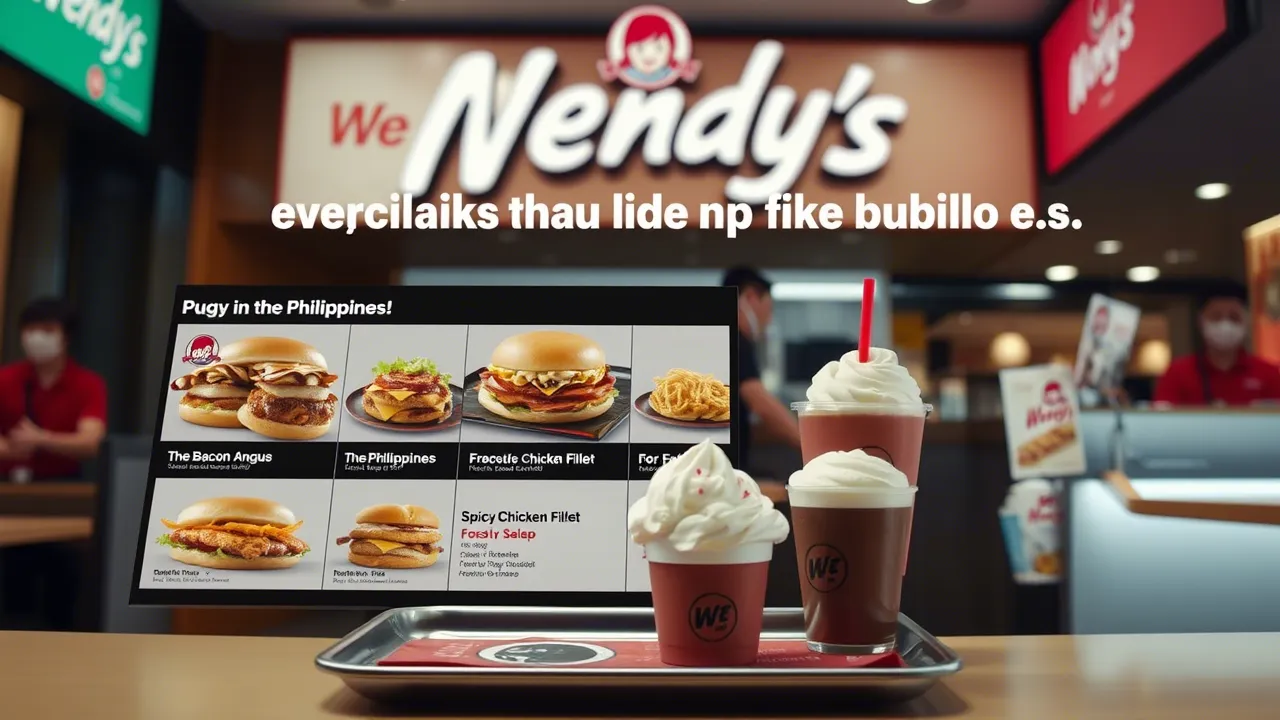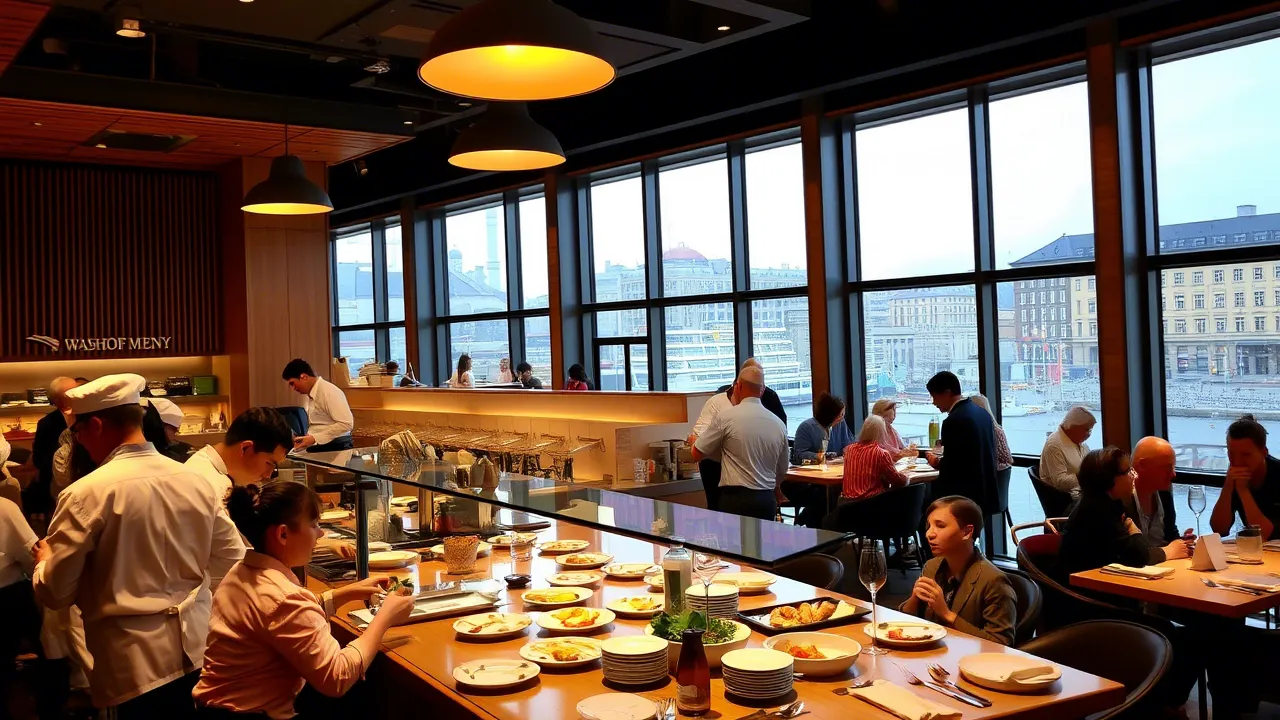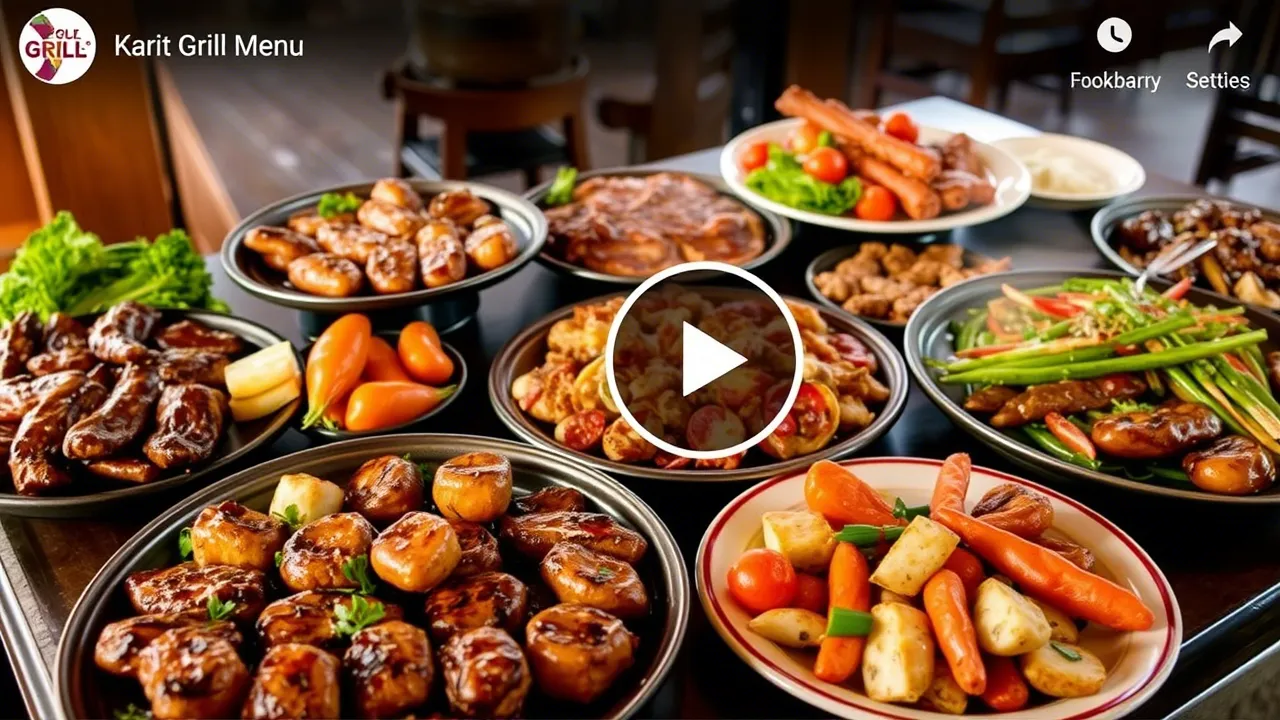Wendy’s in the Philippines offers a diverse range of fast-food options catering to various tastes. The menu includes classic burgers like the Bacon Mushroom Melt and Cheeseburger, as well as sandwiches such as the Classic Chicken Sandwich and Fish Sandwich.
Fried chicken is available in different quantities and spiciness levels, while salads like Caesar Salad Supreme and Macaroni Salad provide healthier choices. Desserts feature Frosty in chocolate and vanilla flavors, along with unique items like Mango Sticky Rice Frosty Overload. Notably, spaghetti is a local adaptation, adding a Filipino twist to the menu. Beverages include Iced Tea, Coke, and specialty drinks like Frosty-ccino and Frappe options.
For the most current and detailed menu, visit the official website at Wendy’s Philippines.
Unexpected Detail
An interesting addition is the inclusion of spaghetti, which is not typically found on Wendy’s menus in other countries, reflecting local culinary preferences.
Comprehensive Survey Note on Wendy’s Menu in the Philippines
Wendy’s, a globally recognized fast-food chain, has adapted its menu to suit the tastes of Filipino consumers, offering a blend of international favorites and local flavors. This survey note provides a detailed examination of the menu available in the Philippines, drawing from various online sources to ensure a comprehensive overview. The analysis includes menu categories, specific items, pricing, and unique offerings, ensuring a thorough understanding for both casual diners and those interested in the chain’s localization strategy.
Menu Categories and Offerings
The menu at Wendy’s Philippines is divided into several categories, each catering to different meal preferences and dining occasions. Below is a detailed breakdown based on available information from third-party menu aggregators and the official website, which lists categories such as What’s New, Whattabox, Burgers, Sandwiches, Fried Chicken, Fambox, and more.
- Burgers: A staple of Wendy’s, burgers are available in junior and big sizes, with options like Bacon Mushroom Melt, Cheeseburger Deluxe, Dave’s Single, and Baconator Single. These are offered both as solo items and in combo meals, with prices ranging from ₱92 for a Cheeseburger Deluxe solo to ₱410 for a Dave’s Triple combo, according to Wendy’s Menu Prices Philippines. The Bacon Mushroom Melt, popular in the Philippines since the early 1990s, features smoked bacon, portobello mushrooms, and cheddar cheese sauce, as noted in Wendy’s – Wikipedia.
- Sandwiches: Non-burger sandwich options include the Classic Chicken Sandwich, Spicy Classic Chicken Fillet, and Fish Sandwich, priced between ₱145 and ₱225 for combos. These cater to those seeking alternatives to beef, with the Spicy Classic Chicken Fillet offering a kick for spice enthusiasts.
- Fried Chicken: Wendy’s Philippines offers fried chicken in various forms, including 1-piece or 2-piece servings with rice, both regular and spicy. Prices start at ₱95 for a 1-piece with rice solo and go up to ₱284 for a 3-piece spicy option. Combo meals, such as 1-piece with rice and fries, are priced at ₱165, providing value for families or larger meals.
- Salads: Health-conscious diners can choose from Caesar Salad Supreme, Macaroni Salad, and Summer Berry Salad, with prices ranging from ₱70 for a side Macaroni Salad to ₱205 for a big Caesar Salad Supreme. These options reflect Wendy’s effort to offer lighter fare, with the Summer Berry Salad being a seasonal addition.
- Desserts: Desserts include Frosty in chocolate and vanilla, available in 6oz, 12oz, and 16oz sizes, priced from ₱45 to ₱85. Unique offerings like Mango Sticky Rice Frosty Overload, at ₱49 for 6oz, and Classic Churro Fries at ₱90, add a sweet and indulgent touch. An X post from June 2024 by Bhytes1 on X highlighted the Mango Sticky Rice Frosty, indicating its popularity among locals.
- Unique Items and Local Adaptations: One notable local adaptation is the inclusion of spaghetti, mentioned in the same X post, which is not typical in Wendy’s international menus but aligns with Filipino dining preferences for rice and noodle dishes. Prices for spaghetti solo are around ₱65, with combo options like 1-piece fried chicken with spaghetti and drink at ₱179.
- Beverages: The beverage menu includes Iced Tea (classic, mango, and peach) in various sizes, priced from ₱75 to ₱125 for a litro, and soft drinks like Coke and Sprite, ranging from ₱60 to ₱90. Specialty drinks like Frosty-ccino and KitKat Frosty Frappe, at ₱89 and ₱125 respectively, cater to coffee and dessert lovers.
- WhattaBox and FamBox: These are combo meals designed for individuals and families. Whattabox options include Bacon Mushroom Melt and Fried Chicken, priced from ₱222 to ₱324, while FamBox platters, good for 3 or 4, start at ₱465 for Bacon Mushroom Melt with drinks, offering value for group dining. These are particularly popular for family gatherings, with prices reflecting the inclusion of multiple items.
- Breakfast Items: Although not as extensively detailed, breakfast options include Bacon Mushroom Melt Breakfast and Honey BBQ Tapa Breakfast Bowl, with solo prices at ₱159 and meal prices at ₱185, catering to early risers with familiar flavors.
For breakfast lovers, exploring Hungry Jack’s breakfast menu reveals a variety of morning delights. Their offerings include brekky rolls and wraps, all featuring flame-grilled patties that provide a unique smoky, BBQ flavor—a taste you just can’t get from pan frying.
Pricing and Accessibility
Pricing varies by item and combo, with solo burgers starting at ₱92 and family platters reaching ₱895 for a FamBox Fried Chicken with Spaghetti for 4. The menu is designed to be affordable, with many items under ₱200, aligning with the competitive fast-food market in the Philippines. For exact prices and availability, the official website Wendy’s Philippines is recommended, though direct text extraction was challenging, leading to reliance on third-party sources like Wendy’s Menu in Philippines 2025 for detailed listings.
Local and Seasonal Variations
The inclusion of spaghetti and unique desserts like Mango Sticky Rice Frosty Overload highlights Wendy’s adaptation to local tastes, a strategy evident in other fast-food chains in the Philippines. Seasonal items, such as the Summer Berry Salad and Ube Quezo Holiday Frosty, suggest a dynamic menu that changes with trends and holidays, adding excitement for regular customers.
Comparative Analysis
Compared to Wendy’s global menu, the Philippines version includes local favorites like spaghetti, which is not mentioned in the U.S. menu at Welcome to Wendy’s. This localization is supported by the chain’s history in the Philippines since 1982, as noted in Wendy’s – Wikipedia, and its expansion plans, with 72 locations as of recent reports, according to Wendy’s Philippines Locations.
Tables for Clarity
To organize the information, below are tables summarizing key categories and their price ranges, based on the data from Wendy’s Menu Prices Philippines and Wendy’s Menu in Philippines 2025:
| Category | Example Items | Price Range (₱) |
|---|---|---|
| Burgers | Bacon Mushroom Melt, Dave’s Single | 92 – 410 |
| Sandwiches | Classic Chicken, Fish Sandwich | 145 – 225 |
| Fried Chicken | 1-pc with Rice, 3-pc Spicy | 95 – 284 |
| Salads | Caesar Salad, Macaroni Salad | 70 – 205 |
| Desserts | Frosty, Mango Sticky Rice Frosty | 45 – 120 |
| Beverages | Iced Tea, Frosty-ccino | 60 – 125 |
| Combo Meals | Example | Price Range (₱) |
|---|---|---|
| Whattabox | Bacon Mushroom Melt, Fried Chicken | 222 – 324 |
| FamBox | Fried Chicken with Spaghetti (for 4) | 465 – 895 |
These tables provide a quick reference for diners, highlighting the affordability and variety available.
Conclusion
Wendy’s menu in the Philippines is a blend of global fast-food standards and local adaptations, offering something for everyone from solo diners to families. The inclusion of spaghetti and unique desserts like Mango Sticky Rice Frosty Overload, as confirmed by social media mentions, underscores the chain’s efforts to resonate with Filipino consumers. For the most accurate and up-to-date information, visiting Wendy’s Philippines or checking local outlets is recommended, given the potential for seasonal and promotional variations.


